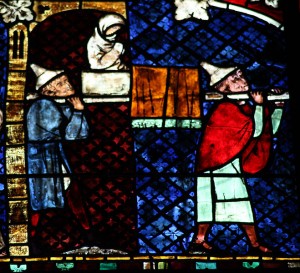Luke 14:1, 7-14
This text is used for the Lectionary Year C on August 28, 2016.

This passage begins with Jesus going to the home of the leader of a synagogue for a Sabbath meal. Luke provides no fanfare in his introduction of this story, but the setting for this narrative would have been striking to the gospel’s first audience. The Gospels are filled with confrontations between Jesus and the Pharisees. They also offer stories of Jesus having dinner with tax collectors and sinners. However, Luke alone tells stories of Jesus eating with Pharisees. In Chapter 7, Luke recounts Jesus’ eating with a Pharisee when the unexpected and the scandalous occurred. A sinful woman came in and washed Jesus’ feet with her tears, dried them with her hair, kissed them and anointed them with perfume (7:36-50). Now in Chapter 14, one finds Jesus at the table of another Pharisee. This setting should forewarn the audience that they should be prepared for either a significant event or a significant word from Jesus.
The lectionary text omits verses 2 through 6. This omission is unfortunate as it aids in understanding the selected text’s context. In these verses Jesus heal a man with “abnormal swelling of his body” (v. 2). Jesus’ healing on the Sabbath is a reoccurring issue between Jesus and the Pharisees. One sees this tension played out in Chapter 13 when Jesus heals the bent and broken woman on the Sabbath within the synagogue walls. Jesus uses a similar explanation to validate healing on the Sabbath in both chapters. Jesus’ choice to heal on the Sabbath in front of the Pharisees and within the home of a Pharisee would have created tension in the room. In this context Jesus speaks both to the dinner guests and the meal’s host.


 We live in an era in which we get a daily dose of hard news born in hatred, division and violence. Churches and religious leaders search for words, and communities long for action. Do we have a gospel big enough for this moment?
We live in an era in which we get a daily dose of hard news born in hatred, division and violence. Churches and religious leaders search for words, and communities long for action. Do we have a gospel big enough for this moment?